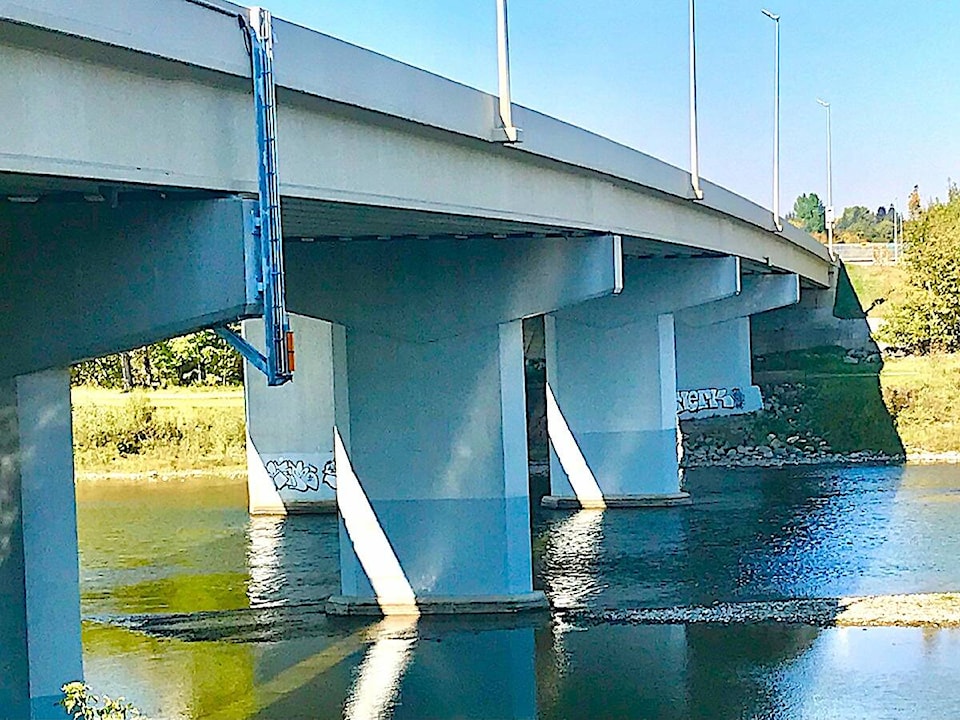Traffic on Taylor Bridge in Red Deer was inconvenienced for a good environmental cause on Thursday.
City of Red Deer workers took a northbound lane out of commission for the installation of a new $50,000 hydrocarbon detector.
The pipe-like device is now hanging down one side of the bridge and constantly scanning water flow in the Red Deer River.
The unit will show whether there’s any oil floating on top of the water, said Tom Marstaller, the city’s environmental planning superintendent.
The detector bounces ultra-violet light off the river’s surface and the colour that’s projected back shows a difference if oil is in the water. “The hydrocarbons spread out over the surface (of the river), so if there is any kind of a sheen on the surface it can detect that,” said Marstaller.
He noted there were no oil spills in the river in the past five years. But hydrocarbon pollution could trickle in from a truck accident or a train derailment. He noted there is a vehicle bridge over the river at Hwy 2 and a railway crossing just west of it.
Monitoring for water quality and environmental health is a provincial government requirement — and a cause that’s also very important to the City of Red Deer, since Red Deerians get their drinking water from the Red Deer River. “We are always looking to maintain the water at a high quality,” said Marstaller.
Last year, the City of Red Deer took another step towards this goal by completing a $28 million residuals management plant that is returning cleaner, clearer water to the river after the treatment process.
Whenever water is drawn from the river for drinking purposes, sedimentation has to be filtered out at the treatment plant. This separated sand is then treated with chemicals so it will settle in the holding tanks.
The new residuals plant removes these chemicals from the sand, and the silty material is then landfilled, instead of returned to the river.
Observant city residents will be able to notice cleaner, silt-free water being returned to the river from a new outtake system.
